Disclosure: This article contains affiliate links. We may earn a commission from purchases at no extra cost to you, which helps our travel content.
The first time I laid eyes on the ochre landscape of Australia's Red Centre, I was instantly transported back to my environmental fieldwork days. But this time, I wasn't collecting soil samples or monitoring water quality – I was embarking on a family adventure through Alice Springs with my good mates Dave and his two children, Emma (9) and Jack (11). As someone who's traversed national parks across America and studied ecosystems worldwide, I can confidently say that Alice Springs offers a uniquely accessible window into one of our planet's most extraordinary environments. The juxtaposition of ancient Aboriginal culture against the backdrop of rugged outback wilderness creates an outdoor classroom that captivates curious young minds while entertaining adults. Whether you're tracking desert wildlife at dawn, star-gazing beneath the Southern Hemisphere's constellations, or learning about sustainable desert living from the world's oldest continuous culture, Alice Springs delivers family experiences that are both entertaining and profoundly educational.
Desert Park: Where Wildlife Education Meets Adventure
The Alice Springs Desert Park stands as a testament to what thoughtful environmental education can be. Unlike traditional zoos where animals are simply displayed, this living museum seamlessly integrates wildlife into their natural desert habitats.
On our first morning, we arrived just as the park opened – a strategy I've employed in national parks worldwide to maximize wildlife sightings. The children's faces lit up during the free-flight bird show, where wedge-tailed eagles soared mere feet above our heads. The presenter, a young Aboriginal guide named Jarrah, expertly wove traditional knowledge with scientific facts about raptor adaptation.
'Uncle Ryan,' Emma whispered excitedly (they've adopted me as honorary family), 'the birds actually listen to him!' Indeed, watching the partnership between handler and wildlife was remarkable.
The nocturnal house proved equally captivating. After our eyes adjusted to the reversed lighting (cleverly simulating night during day hours), we spotted bilbies, mala, and the elusive thorny devil – creatures that had previously existed only in Jack's wildlife books. The Desert Park's approach reminded me of the best aspects of America's national park interpretive programs, but with the added dimension of 60,000+ years of Aboriginal knowledge.
For optimal exploration, I'd recommend bringing a quality binoculars – the park's vastness means wildlife spotting opportunities abound, particularly in early morning hours when desert creatures are most active.

💡 Pro Tips
- Visit first thing in the morning when desert wildlife is most active and temperatures are cooler
- Don't miss the free-flight bird show – arrive 15 minutes early for best seats
- Allow at least 3-4 hours to properly experience all three desert habitat zones
Aboriginal Culture: Connecting Kids with the World's Oldest Living Culture
My scientific background has always drawn me to indigenous knowledge systems, which often contain ecological insights developed over thousands of years of observation. In Alice Springs, these opportunities for cultural connection abound, and they're presented in ways that genuinely engage children.
At the Araluen Cultural Precinct, we participated in a dot painting workshop specifically designed for families. What impressed me most was how the instructor, Aunty Kathy, explained the symbolic language of Aboriginal art in terms children could grasp – comparing topographical dreamtime maps to the satellite imagery we use in environmental science today.
'Look at how they show water sources,' I pointed out to Jack, who has inherited his father's artistic talent. 'These concentric circles represent the same watering holes we'd identify using remote sensing technology.'
The Aboriginal Art and Culture Centre offered another immersive experience. Here, Emma and Jack learned to throw boomerangs (harder than it looks!), while I chatted with elder Uncle Tom about traditional land management practices. His explanation of controlled burning techniques mirrored many of the prescribed fire protocols we now employ in American forest management – a perfect example of traditional knowledge informing modern science.
For families wanting to take home meaningful souvenirs, I'd recommend the art supplies available at the cultural center. After the workshop, both children were inspired to create their own dot paintings, and having proper materials enhanced their experience tremendously.

💡 Pro Tips
- Book cultural workshops in advance as they often sell out, especially during peak season
- Allow children to ask questions directly to Aboriginal guides – they're incredibly patient with curious kids
- Purchase authentic, ethically sourced Aboriginal art as meaningful souvenirs that support local communities
Outback Ballooning: Desert Sunrise from Above
As an environmental scientist, I've always believed that understanding landscape patterns requires multiple perspectives. Seeing the MacDonnell Ranges from a hot air balloon provided exactly that – a breathtaking aerial view of ancient geological formations that have shaped this unique ecosystem.
Outback Ballooning offers family-friendly flights that depart before dawn, culminating in a sunrise experience that had even the normally screen-obsessed Jack utterly transfixed. The gentle ascent reveals the Red Centre awakening – kangaroos bounding across the landscape, shadows stretching across ancient riverbeds, and the geometric patterns of vegetation adapting to water scarcity.
Our pilot, Steve, had a natural gift for translating complex geological history into captivating stories. 'These mountains you're seeing,' he told the children, 'were once taller than the Himalayas. Over 300 million years, they've been worn down grain by grain.'
'Like watching erosion in super slow motion,' I added, grateful for an experience that made geological time comprehensible to young minds.
The post-flight champagne breakfast (with juice for the kids) included bush foods that connected our aerial adventure to the ground-level exploration we'd been doing all week. While certainly a splurge in our mid-range budget, this activity earned unanimous 'best experience' votes from our entire group.
For this early morning adventure, I was glad I'd packed my insulated jacket. Winter mornings in the desert can be surprisingly chilly, and the additional warmth at altitude was essential for comfortable viewing, especially for the kids.

💡 Pro Tips
- Book at least 3-4 days in advance and be prepared for weather-related rescheduling
- Layer clothing as desert mornings are cold but warm quickly after sunrise
- Bring a camera with sufficient memory – the changing light conditions create countless photo opportunities
Reptile Centre: Hands-on Learning for Brave Young Explorers
Having studied conservation biology throughout my career, I've always appreciated facilities that transform fear into fascination through education. The Alice Springs Reptile Centre exemplifies this approach, offering children supervised encounters with Australia's infamous reptiles in a safe, controlled environment.
'I'm not touching that,' declared Emma firmly when the handler first presented Terry, a blue-tongued lizard. Twenty minutes later, after learning about the lizard's ecological role and gentle nature, she was confidently holding Terry while her father captured the moment on camera.
The progression from apprehension to appreciation continued through our visit. Jack, initially wary of snakes, became engrossed in comparing the adaptations of venomous and non-venomous species. By the time we reached the handling session with Clancy the olive python, both children were volunteers.
'The scales feel nothing like I expected,' Jack remarked, running his finger along Clancy's surprisingly smooth surface. 'They're not slimy at all!'
What impressed me most was how the centre balanced entertainment with conservation messaging. Rather than sensationalizing dangerous species, the presentations emphasized respect, understanding, and the critical ecological roles these animals play in maintaining desert health.
The thorny devil exhibit particularly captivated our group. These remarkable creatures have evolved specialized scales that channel morning dew directly to their mouths – a water harvesting adaptation that would impress any environmental engineer.
For documenting these close encounters, I relied on my trusty action camera. Its compact size and quick operation meant I could capture the children's expressions of wonder without disrupting their experience or bothering other visitors.

💡 Pro Tips
- Visit during scheduled handling sessions (typically 11am and 2pm) for interactive opportunities
- Prepare children by discussing boundaries – they'll never be forced to handle reptiles if uncomfortable
- Ask the handlers about local conservation efforts – they're involved in important research and rescue work
Kangaroo Sanctuary: Twilight Encounters with Australia's Icons
Having watched countless nature documentaries featuring kangaroos throughout my life, I was unprepared for the emotional impact of meeting these marsupials up close at The Kangaroo Sanctuary. This remarkable conservation center, made famous by the BBC's 'Kangaroo Dundee' series, rescues, rehabilitates, and releases orphaned joeys.
We booked the sunset tour, arriving as the day's heat was subsiding and the sanctuary's residents were becoming more active. Our guide, Chris, explained that the facility operates as a working wildlife hospital rather than a tourist attraction – visitors directly fund rescue operations.
'These aren't pets,' he emphasized as we approached our first group of red kangaroos. 'We're guests in their home.'
This philosophy resonated deeply with my environmental ethics. Rather than contriving interactions, we observed the kangaroos' natural behaviors, occasionally being approached by curious individuals who'd grown accustomed to respectful human presence.
The children were transfixed watching joeys emerge from pouches, adolescents practice boxing, and the impressive alpha males display their strength. When a female kangaroo with a joey approached Emma, the girl's whispered 'This is the best day ever' captured the magic perfectly.
Bucky, a rescued kangaroo who'd been hand-raised at the sanctuary, provided the day's most touching moment. Now fully grown but comfortable around humans, he approached our group and gently accepted scratches behind his ears. Watching Jack's expression as he made this connection – human child to wild animal – reminded me why these experiences are so valuable for developing environmental consciousness in young people.
The sanctuary's dedication to conservation over commercialization meant I was glad I'd brought my telephoto lens for my camera. The respectful distance maintained from most animals meant quality optics were essential for capturing memorable images without disturbing the kangaroos.

💡 Pro Tips
- Book the sunset tour at least a week in advance as they frequently sell out
- Respect the no-touching policy unless a kangaroo approaches you first
- Bring cash for donations – seeing the rescue work firsthand inspires most visitors to contribute
Earth Sanctuary: Stargazing and Sustainable Living
The connection between astronomy and environmental awareness has always fascinated me. At the Earth Sanctuary World Nature Centre, these interests converge in a family-friendly experience that combines Aboriginal astronomy, sustainable living demonstrations, and some of the clearest stargazing you'll find anywhere on Earth.
Located just outside Alice Springs, this eco-tourism venture is run by the Falzon family, whose passion for both environmental education and astronomical wonder creates a uniquely engaging evening for visitors of all ages.
Our experience began with a sustainable living tour that showcased practical applications of renewable energy – something I've researched extensively in my professional work. The children were particularly impressed by the solar-powered everything, from cooking demonstrations to the observatory equipment.
'It's like camping but with science,' Jack observed as we learned how the facility operates entirely off-grid.
As darkness fell, we were introduced to Aboriginal star lore by Tom Falzon, whose storytelling abilities kept even the youngest visitors engaged. The Southern Cross, visible year-round in the Australian sky, features prominently in many Dreamtime stories, and Tom's explanation of how these celestial navigation tools informed traditional movement patterns added cultural depth to our astronomical observations.
The highlight came when we accessed the sanctuary's telescopes. Emma's gasp when she first viewed Saturn's rings was audible across the viewing platform. 'It looks exactly like the pictures in my science book!' she exclaimed. Jack was equally impressed by the Jewel Box cluster, a collection of colorful stars that sparkled like a cosmic treasure chest through the powerful optics.
For comfortable stargazing, our camping chairs proved invaluable. While the sanctuary provides some seating, having our own chairs meant we could position ourselves optimally for both the storytelling portion and later telescope viewing.

💡 Pro Tips
- Dress very warmly for winter evening stargazing – desert temperatures drop dramatically after sunset
- Bring red-light flashlights to preserve night vision while moving around the sanctuary
- Consider booking the dinner option – the bush tucker inspired meal adds to the cultural experience
Final Thoughts
As our week in Alice Springs drew to a close, I found myself reflecting on how this remote outback town had delivered exactly what I value most in family travel – meaningful educational experiences wrapped in adventure and wonder. The children's travel journals (a tradition I've encouraged since my own nephews were young) brimmed with sketches of thorny devils, pressed wildflowers, and star charts. More importantly, their conversations had shifted from 'When can I use my iPad?' to questions about water conservation, Aboriginal history, and desert adaptation strategies. If you're considering a family adventure that combines Australia's iconic wildlife with cultural depth and natural science, Alice Springs offers an accessible entry point to the Red Centre's magic. The connections your children make here – to ancient landscapes, living cultures, and remarkable wildlife – will outlast any theme park memories. Pack your sense of wonder, bring plenty of water, and prepare for an outback adventure that will reshape how your family sees our remarkable planet.
✨ Key Takeaways
- Winter (June-August) provides ideal temperatures for family exploration of Alice Springs
- Combining wildlife encounters with cultural experiences creates a balanced itinerary for different interests
- Early morning and sunset activities maximize wildlife sightings while avoiding midday heat
📋 Practical Information
Best Time to Visit
Winter (June-August)
Budget Estimate
$150-250 AUD per day per family
Recommended Duration
5-7 days
Difficulty Level
Moderate

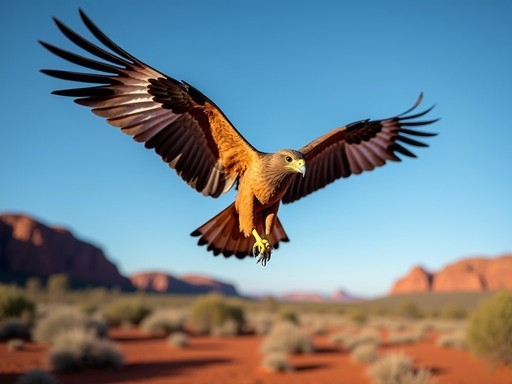







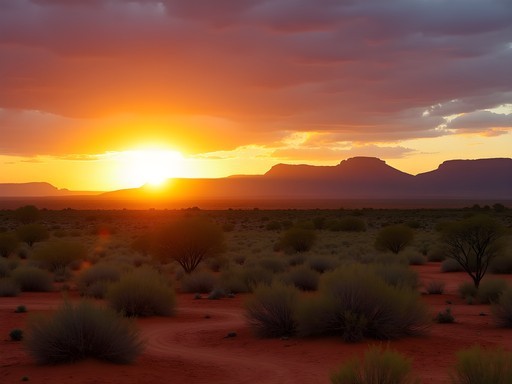

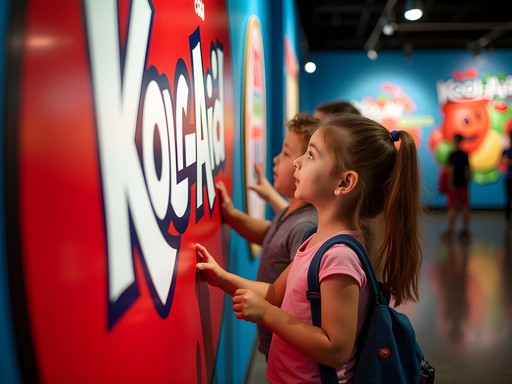
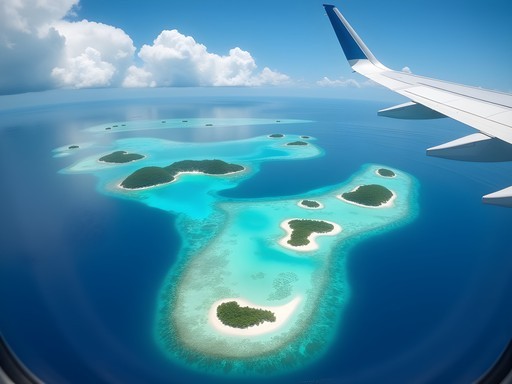
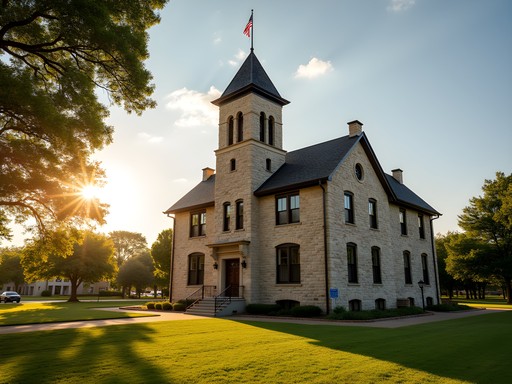

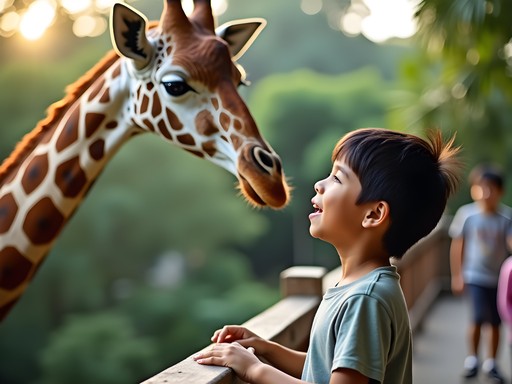

Comments
Casey Andersson
Ryan, your post took me right back to our Alice Springs adventure last year! The Desert Park was absolutely magical at dusk - we splurged on the nocturnal tour and it was worth every penny to see the bilbies and other night creatures active. One tip for families I'd add: the Cultural Centre in town offers kid-friendly dot painting workshops on Tuesdays and Thursdays that my nephew absolutely loved. They get to create their own souvenir while learning about indigenous art traditions. The instructors were so patient with little ones! Did you get a chance to visit the School of the Air? That was another highlight that really showed the kids how outback education works.
Ryan Sanders
Thanks Casey! We did visit the School of the Air - fascinating place that shows the incredible adaptability of education in remote areas. My kids were amazed by how students connect from such vast distances. The dot painting workshops sound wonderful - wish we'd known about those!
summerfan
Adding both of these to my list! How long would you recommend staying in Alice Springs with kids?
Casey Andersson
We found 4-5 days perfect for Alice Springs itself, plus extra if you're doing side trips to Uluru or Kings Canyon. Gives you enough time to enjoy activities without rushing, plus buffer for those inevitable 'I'm too hot/tired' kid moments! 😊
summerfan
This looks amazing for kids! How hot was it when you visited? Wondering if October would be too scorching for my little ones who aren't used to heat.
Ryan Sanders
October is actually a great time to visit! Temperatures were manageable - around 28-32°C (82-90°F) during the day. Just plan outdoor activities for mornings, carry plenty of water, and use sun protection. The Desert Park has shaded areas too.
summerfan
That's so helpful, thanks Ryan! Will definitely pack our cooling towels for the kids then.
journeychamp
Just got back from Alice Springs with our kids (8 and 10) and can confirm everything in this post! The Aboriginal dot painting workshop at the cultural center was their favorite activity - they still talk about it weeks later. One tip I'd add: we used kids binoculars for wildlife spotting at Desert Park and it made a huge difference in keeping them engaged. The guides were so patient explaining animal tracks too. Wish we'd planned an extra day for the School of the Air tour though - heard it's fascinating!
starmood
Thanks for the binoculars tip! Adding to my packing list for our trip next month!
mountainnomad
Did the balloon ride last month. Absolutely worth the early wake-up call! Magic.
winterway5387
Would you recommend Alice Springs for really little ones? My twins are only 3. Is it worth waiting a couple years?
Ryan Sanders
I'd probably wait until they're 5 or 6 to fully appreciate it. The Reptile Centre would be a hit, but some of the cultural experiences need a bit more attention span. Plus, the heat can be challenging for toddlers.
journeychamp
We took our 4-year-old last year and it was hit or miss. She loved the animals but got tired quickly in the heat. Definitely bring a good sun hat and maybe one of those cooling towels!
Frank Garcia
Really appreciated this breakdown, Ryan. I typically cover solo backpacking, but I've been getting more questions about family destinations lately. The Aboriginal culture experiences you mentioned seem particularly valuable - that kind of educational immersion is something I find lacking in many 'family-friendly' itineraries. I spent two weeks in the Red Centre last year and would add that the timing of activities is crucial due to the heat. The early morning balloon ride is genius - not just for the views but to avoid midday temperatures. Did you find the Desert Park manageable in terms of walking distances for younger kids?
Ryan Sanders
Thanks Frank! The Desert Park has several rest areas and the trail is designed with families in mind. My 7-year-old had no issues, though we did bring plenty of water and took our time. The nocturnal house in the middle provides a nice air-conditioned break too!
Frank Garcia
Good to know about the nocturnal house as a cooling break - smart planning there!
starmood
Oh my gosh, I never thought Alice Springs would be so kid-friendly! Those pictures from the Desert Park are amazing! Adding this to our family bucket list ASAP!
journeyadventurer
Just got back from Alice with our kids! Pro tip: the Kangaroo Sanctuary's sunset tour was their absolute favorite activity. Book well in advance though!
Savannah Torres
Ryan, your post couldn't have come at a better time! I'm planning our family's Australia trip for next year and Alice Springs just moved to the top of our list. As a mom of three (ages 6, 8, and 11), I'm always looking for places that balance education with fun, and this seems perfect. I'm particularly interested in the Aboriginal cultural experiences you mentioned. Did you find any specific tour operators that were especially good with kids? My oldest is really into art, so the dot painting workshops sound perfect. Also, how many days would you recommend staying in Alice Springs with kids? Is a week too long? I'm trying to balance our time between here, Uluru, and the coast. Thanks for the wonderfully detailed post!
wanderlustguy
We did almost this exact itinerary with our kids (7 and 9) last year! The Aboriginal cultural experiences were the highlight for us - our kids still talk about learning to throw a boomerang and the dot painting workshop we did. One tip for families: bring a good pair of binoculars for each child. The desert landscape seems empty at first glance, but with binoculars, they can spot all kinds of wildlife, especially early morning. We used our kids binoculars and they were perfect - durable enough to survive being dropped multiple times on rocky ground!
oceanace
Thanks for the binoculars tip! Did you do any night sky viewing? I've heard the stars are amazing out there.
wanderlustguy
Yes! Earth & Sky does amazing stargazing tours just outside Alice. Our kids were blown away seeing the Milky Way so clearly for the first time.
Venture X
Premium card with 2X miles, $300 travel credit, Priority Pass